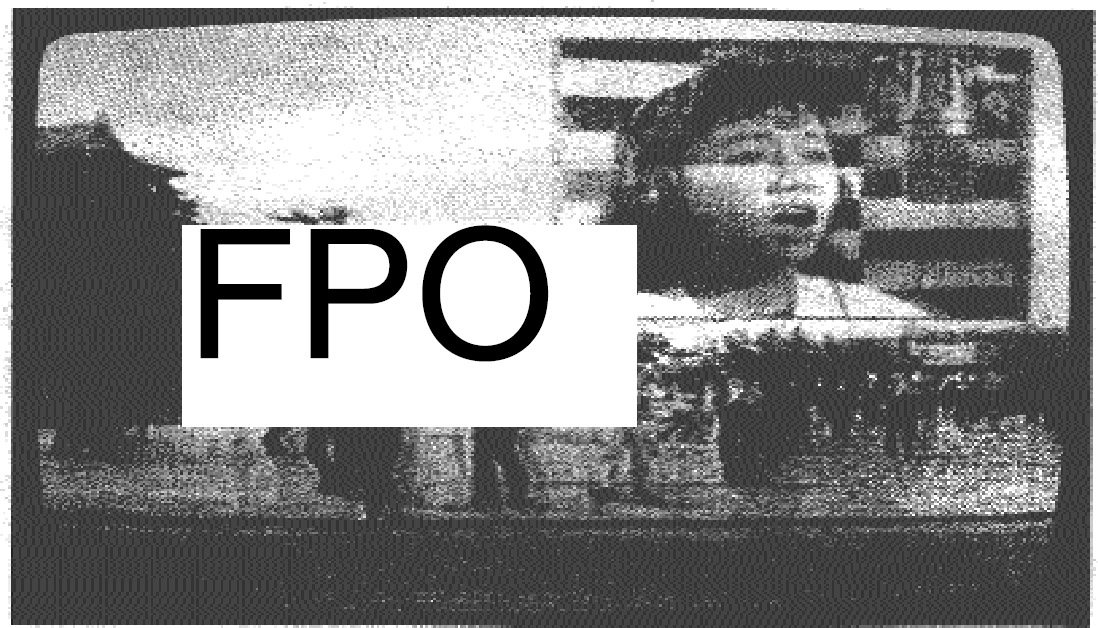DARA BIRNBAUM'S TIANANMEN SQUARE: BREAK-IN TRANSMISSION: A CASE STUDY IN THE EXAMINATION, DOCUMENTATION, AND PRESERVATION OF A VIDEO-BASED INSTALLATIONPAUL MESSIER
2 TIANANMEN SQUARE: BREAK-IN TRANSMISSION2.1 WORKING METHODA five-channel installation, Tiananmen Square: Break-In Transmission (1989–90) incorporates the major themes of Birnbaum's work. Centered on the student and worker occupation of Beijing's Tiananmen Square in 1989, Birnbaum's installation samples a diverse range of broadcast imagery generated by the event. Four video segments present a singer performing the song “Wound of History,” news coverage of the demonstrations, news coverage of the Chinese government–ordered shutdown of broadcasting by CNN and CBS, and video showing the persistence of communication through alternative modes like the fax machine. Figure 1 shows a frame from the “Wound of History” segment. Birnbaum recorded these segments as they were broadcast on television. Her original “capture” medium was 3/4 in. Umatic videotape. The 3/4 in. videotapes were transferred to Betacam SP for editing. The original sound capture had stereo capabilities, though the broadcasted source materials were typically mono. During the editing process, the sound was somewhat “sweetened” and output to four channels (Birnbaum 2000a). “Sweetening” is a loosely defined term in audio-video editing that is generally taken to mean enhancing the sound track for clarity and impact using equalization or some other signal-processing devices. Likewise, some of the video was slightly manipulated to exaggerate certain effects. For example, the breakdown and loss of signal produced after the CNN and CBS shutdown was attenuated. Although the audio and video were manipulated during the editing process, the intervention was minor in accordance with Birnbaum's desire not to conceal the characteristic markers and limitations of television broadcast. Once the Betacam SP master was complete, it was sent to the 3M Corporation in Wisconsin for mastering onto laser disc (LD) (3M has since sold its laser disc operation to the Imation Corporation). The laser disc format was the most successful of the many video disc formats to emerge in the late 1970s to the late 1980s. The LD manufacturing process involves the creation of a glass master from which the optical disc distribution copies are stamped. As is typical, this glass master for Tiananmen Square: Break-In Transmission was not retained. Birnbaum, however, retains the 3/4 in. U-matic cassettes from the original off-air recordings, and, most important, she retains the Betacam SP “disc master” used by 3M. Taped submasters (also on the Betacam SP format) are provided by the artist to the owners of the installation. Detailed descriptions of the videotape formats mentioned in this section are available elsewhere (Stauderman and Messier 1999). 2.2 NOTES ON PROVENANCE AND DOCUMENTATIONThere are two editions and one artist's proof of Tiananmen Square: Break-In Transmission. Edition number 1 of 2 is owned by the Stedelijk Museum voor Actuele Kunst (Museum of Contemporary Art) in Ghent, Belgium. Edition number 2 of 2 is owned by Pamela and Richard Kramlich, private collectors in the San Francisco Bay Area. Birnbaum retains the artist's proof. The piece was commissioned through the Rhona Hoffman Gallery of Chicago and the Josh Baer Gallery of New York City. It was first exhibited at the Josh Baer Gallery in 1990 (the gallery is no longer in business). The Rhona Hoffman Gallery exhibited the piece February 1–23, 1991. Figure 2 shows a detail of the piece during exhibition at the Hoffman Gallery. The work was also exhibited in Boston at the Institute of Contemporary Art from December 9, 1992, to February 21, 1993. The Kramlich edition was obtained through the Rhona Hoffman Gallery. Thea Westreich Art Advisory Services assists the Kramlichs in managing their collection and maintains a file of correspondence and technical specifications pertinent to the installation of the piece. For the exhibition Seeing Time: Selections from the Pamela and Richard Kramlich Collection of Media Art (October 15, 1999–January 9, 2000) at the San Francisco Museum of Modern Art (SFMOMA), the Kramlich edition was replicated using new equipment (creating what Birnbaum terms a second “artist's proof”). Following the exhibition, this
The creation of a second artist's proof for the Seeing Time exhibition raises questions pertaining to authenticity and authorship when it comes to technology-based installations. The concept of limited editions is generally applied to works of art that can be replicated, such as prints and photographs. Limiting an edition for such a work is designed to protect both the integrity of the artist and the interests of the collector from the indefinite production of potentially substandard work. A subset of a limited edition is the artist's proof. Artist's proofs are early works within an edition where technical and aesthetic adjustments are finalized. Therefore the piece exhibited at the SFMOMA is not an artist's proof in the conventional sense since the replication of the work took place almost 10 years after the edition was closed. In addition, the replication for Seeing Time required an artist-patron–authorized reinterpretation of the piece since some key technical components were no longer available due to obsolescence. 2.3 TECHARCHAEOLOGYThe edition examined for this article was the replicated version of the piece exhibited at the SFMOMA. For the two days of TechArchaeology, artists, curators, conservators, video-technology experts, and media art installers examined selected works on display in the SFMOMA's Seeing Time exhibition to sort out the inherent preservation challenges of technology-based art. Tiananmen Square: Break-In Transmission was examined by a working group led by Dara Birnbaum and the author. The ideas generated during this meeting, and subsequent discussion with other conservators and with Birnbaum, helped form the methodology underlying this article. |
